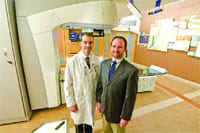Consider This Healthy Back-to-school Checklist
Nurses play an integral role in a child’s well-being, from health screenings and preventive care to first aid and emergency care. With the start of a new school year, the American Nurses Assoc. (ANA) has a few tips for parents to help optimize students’ health, safety, and capacity for learning.
- Make sure immunizations are current. Review your child or teen’s vaccination records and make sure that he or she is up to date on all shots before heading back to school. Most schools will require proof of current immunization in order to attend. Visit www.anaimmunize.org/schools for general information on which vaccinations your child will need. Ask your school nurse if you have questions.
- Don’t forget an eye exam. Healthy vision is an important part of the learning process and success in school. Experts believe that approximately 80{06cf2b9696b159f874511d23dbc893eb1ac83014175ed30550cfff22781411e5} of learning comes through vision. Your child should get an eye exam every two years. Ask about special testing for eye disorders if your child struggles to read.
- Establish a routine before school starts. Summer months usually mean a more flexible bedtime. Before school begins, start setting an earlier bedtime to make sure your child is used to a school schedule.
- Have a contingency plan. Make a plan today for disasters and sick days. Who will take care of your child if he or she is ill? Most schools require that a child be free of fever for 24 hours (without any fever-reducing medicine) before they return to school. Be sure to keep your contact information up to date so the school can contact you in an emergency.
- Prepare the school. If your child has health issues (allergies, asthma, diabetes, etc.), it’s important to inform the school, and to provide medications or supplies. You can help the school develop a plan for daily care and emergencies.
- Get to know the school nurse. Ask if a school nurse is available full-time and on-site. Federal and state laws exist to ensure that your child has access to safe and appropriate care. Contact the National Assoc. of School Nurses (www.nasn.org) if you have a question.
- Stay safe on the street. Develop and review safety instructions for walking to school or waiting for a bus, including reminders about what to do if approached by a stranger.
- Eat for health and learning. Breakfast is the most important meal of the day. Plan ahead to send a healthy lunch and snacks to school, and review menu options to help guide healthy choices. Make sure that your child has access to water throughout the day.
- Keep it clean. Your child will be exposed to all sorts of germs and viruses while at school. Teach your child to wash his or her hands, especially after going to the bathroom and before eating. If handwashing isn’t an option, make sure your child has access to hand sanitizer. Teach your child to cough or sneeze into a tissue or his or her elbow.
- Shop for safe supplies. To avoid injuries to the back and neck, a backpack should never be more than 10{06cf2b9696b159f874511d23dbc893eb1ac83014175ed30550cfff22781411e5} to 20{06cf2b9696b159f874511d23dbc893eb1ac83014175ed30550cfff22781411e5} of your child’s weight. Consider a backpack with wheels, or make sure it has padded straps. Avoid school supplies with PVC plastics, which can be toxic to your child.
Mary MacNamara and Adam Sachs coordinate communications for the American Nurses’ Assoc., the only full-service professional organization representing the interests of the nation’s 3.1 million registered nurses through its constituent and state nurses associations and its organizational affiliates. The ANA advances the nursing profession by fostering high standards of nursing practice, promoting the rights of nurses in the workplace, projecting a positive and realistic view of nursing, and lobbying Congress and regulatory agencies on health care issues affecting nurses and the public.

